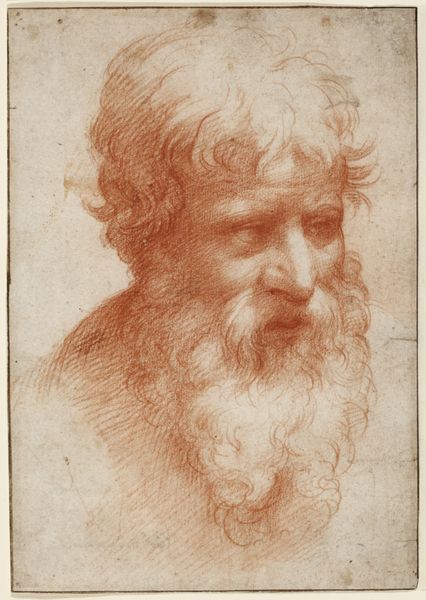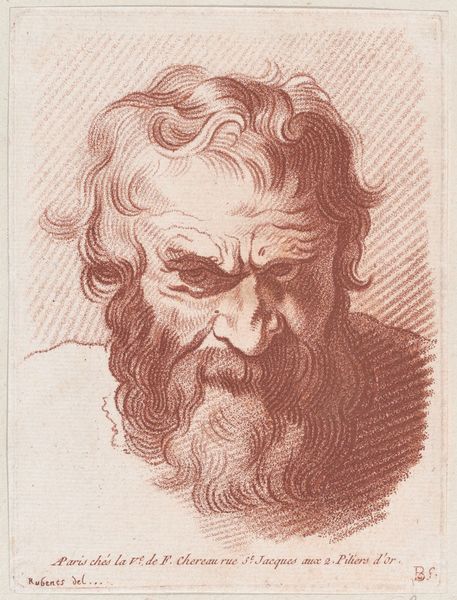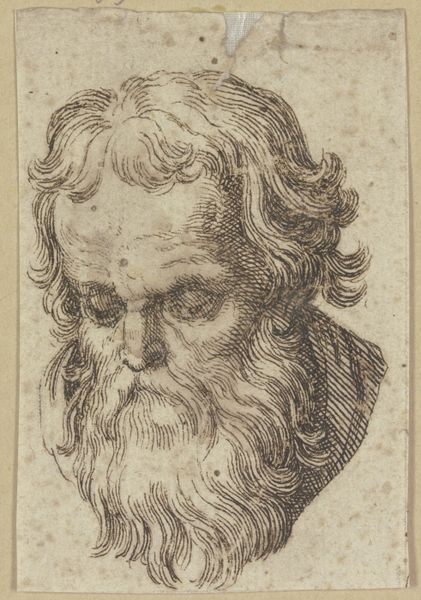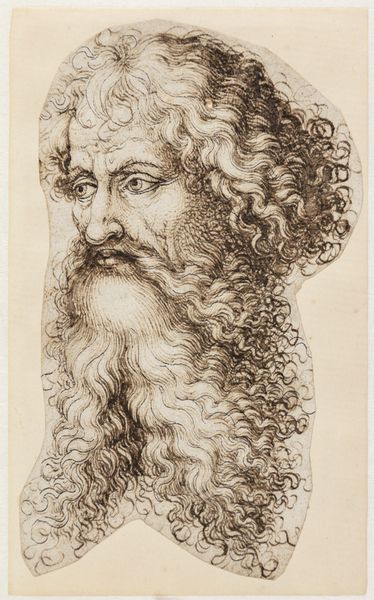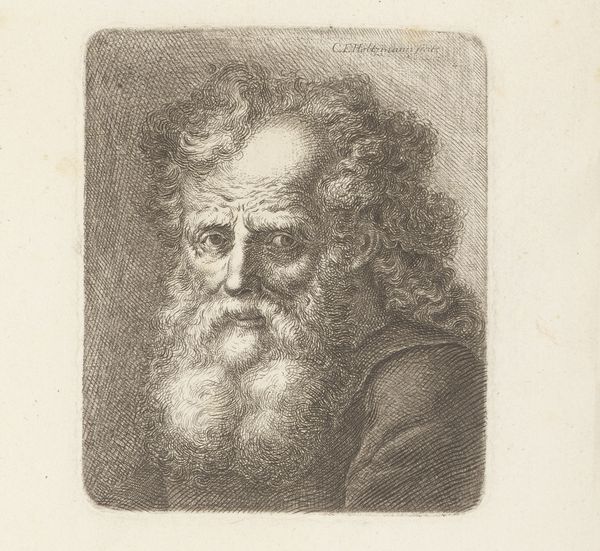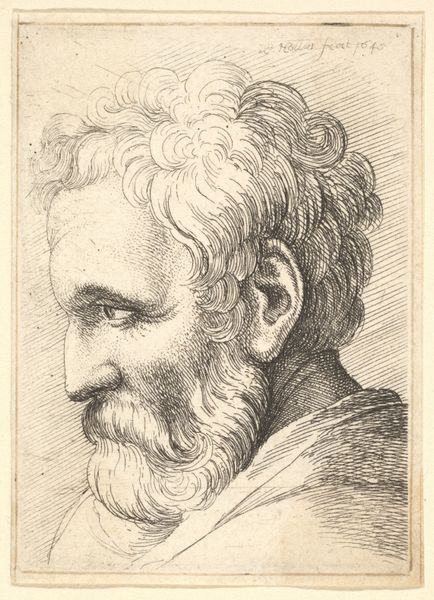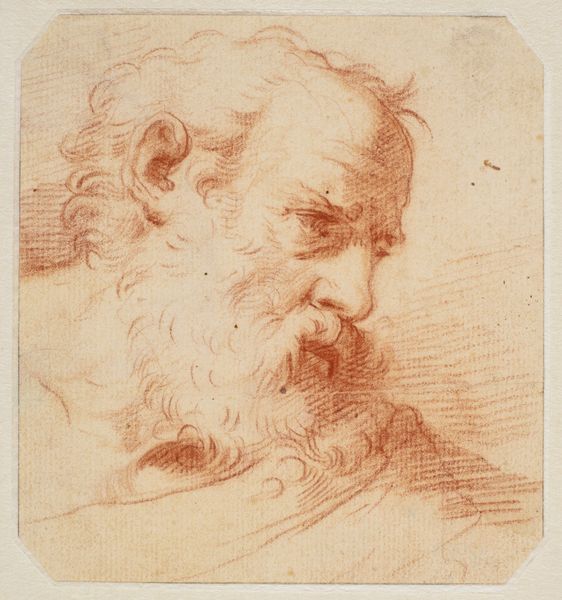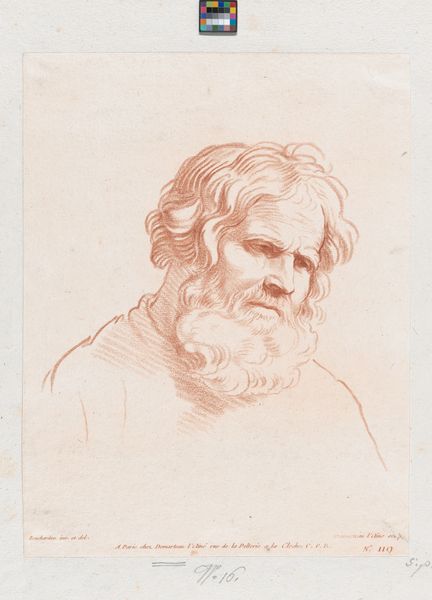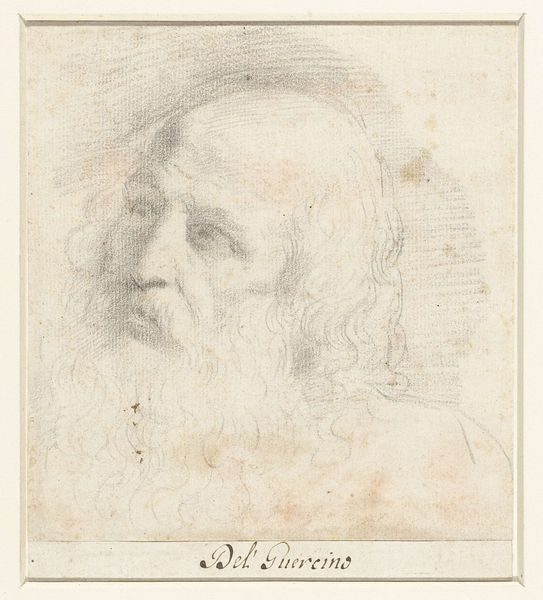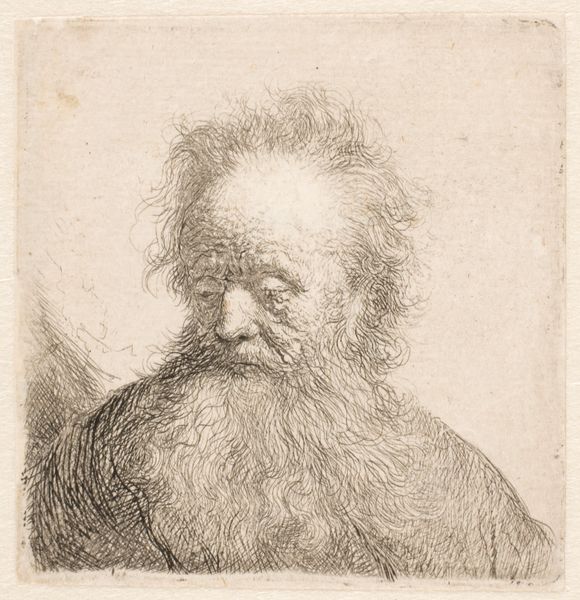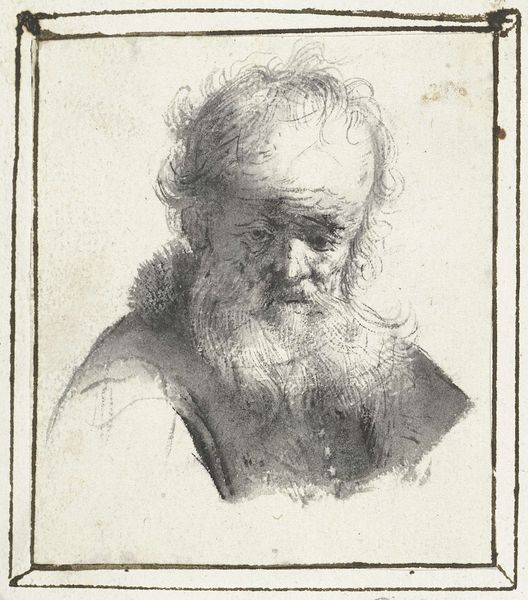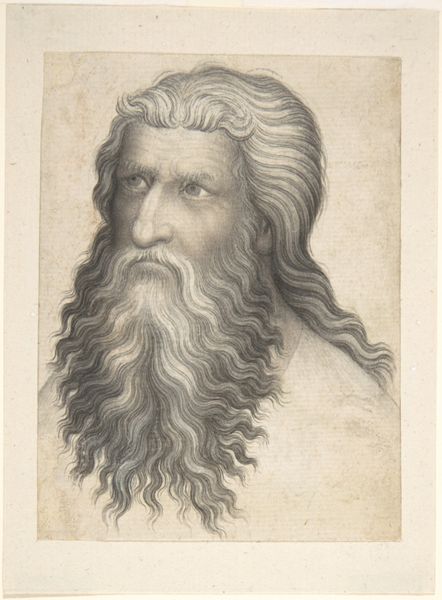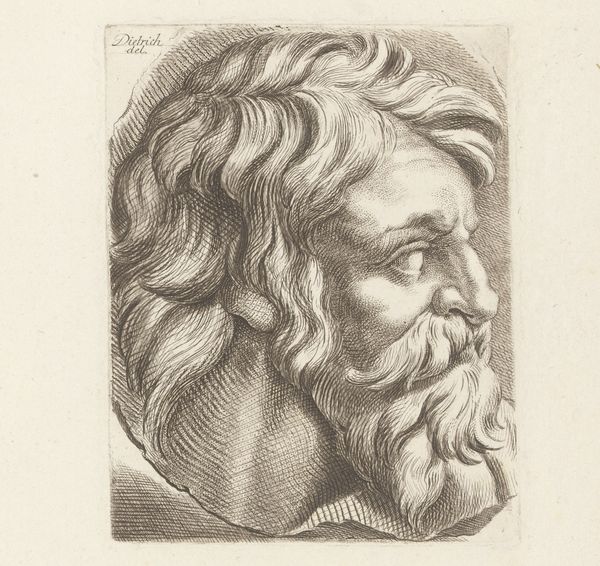
drawing, print, etching
#
portrait
#
drawing
#
baroque
# print
#
etching
Dimensions: Plate: 3 × 2 1/8 in. (7.6 × 5.4 cm)
Copyright: Public Domain
Curator: Immediately striking is the intense, almost melancholic gaze. He seems weary, burdened perhaps by time itself. Editor: Indeed. What we have here is Wenceslaus Hollar's "Head of an old man with a large beard", created in 1645. Hollar, known for his detailed etchings, masterfully captures the textures and subtle emotions. It’s currently held at the Metropolitan Museum of Art. Curator: That’s an excellent introduction to the artist. Seeing those swirling lines forming the beard, I think about the archetype of the wise elder, a figure prominent across cultures. That visual representation, a cascade of experience flowing downwards towards the chest. Editor: The use of etching gives the image a particular depth, almost a tactile quality. Baroque portraiture often explores grand themes and idealised forms, but Hollar's study brings it down to the individual and focuses on wrinkles, texture, and even age as defining attributes of character and identity. This wasn’t always considered dignified, of course. It asks viewers to reconsider the narrative surrounding experience and ageing. Curator: Considering Hollar's historical context, was this depiction an act of rebellion, showing what powerful can emerge from vulnerability? Editor: Precisely. Notice how the face dominates almost the whole frame, pushing it close. The intense stare transcends the print itself to implore the viewer. But notice that the light in his eyes is sharp; I detect the inner resolve despite external lines of age and possible oppression, suggesting resilience and defiance. Curator: Perhaps this figure resonated with others in Hollar's era navigating change. It also makes me consider our culture’s approach to ageing: are we doing as well now at honoring individual struggles for human existence through challenging experiences as this one, created almost 400 years ago? Editor: It’s hard not to consider our world’s obsession with the idealized image that stands so starkly against Hollar’s tribute. I believe this work pushes against that grain. Curator: Seeing that shift towards acknowledging lived experiences feels increasingly relevant now.
Comments
No comments
Be the first to comment and join the conversation on the ultimate creative platform.
